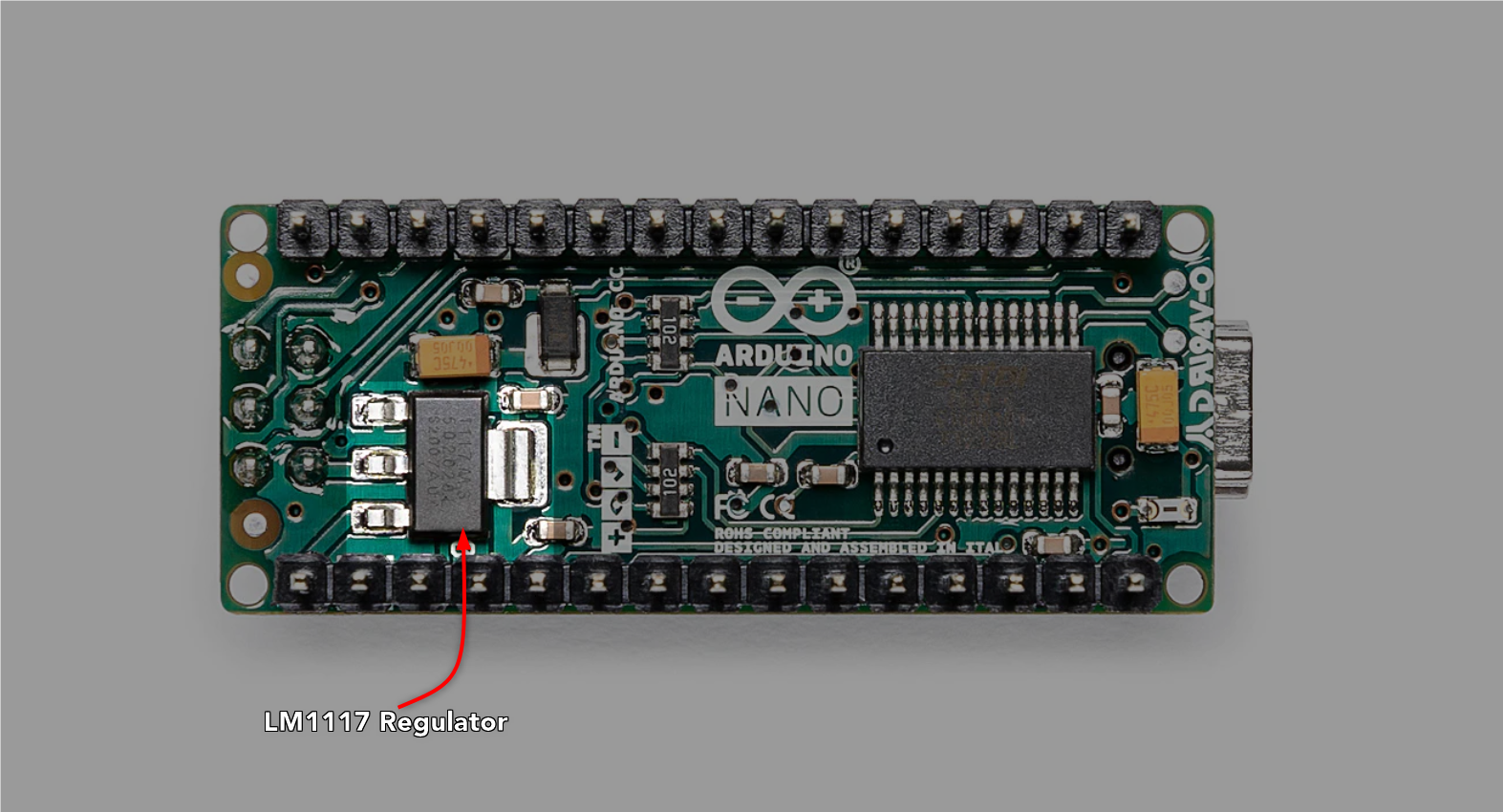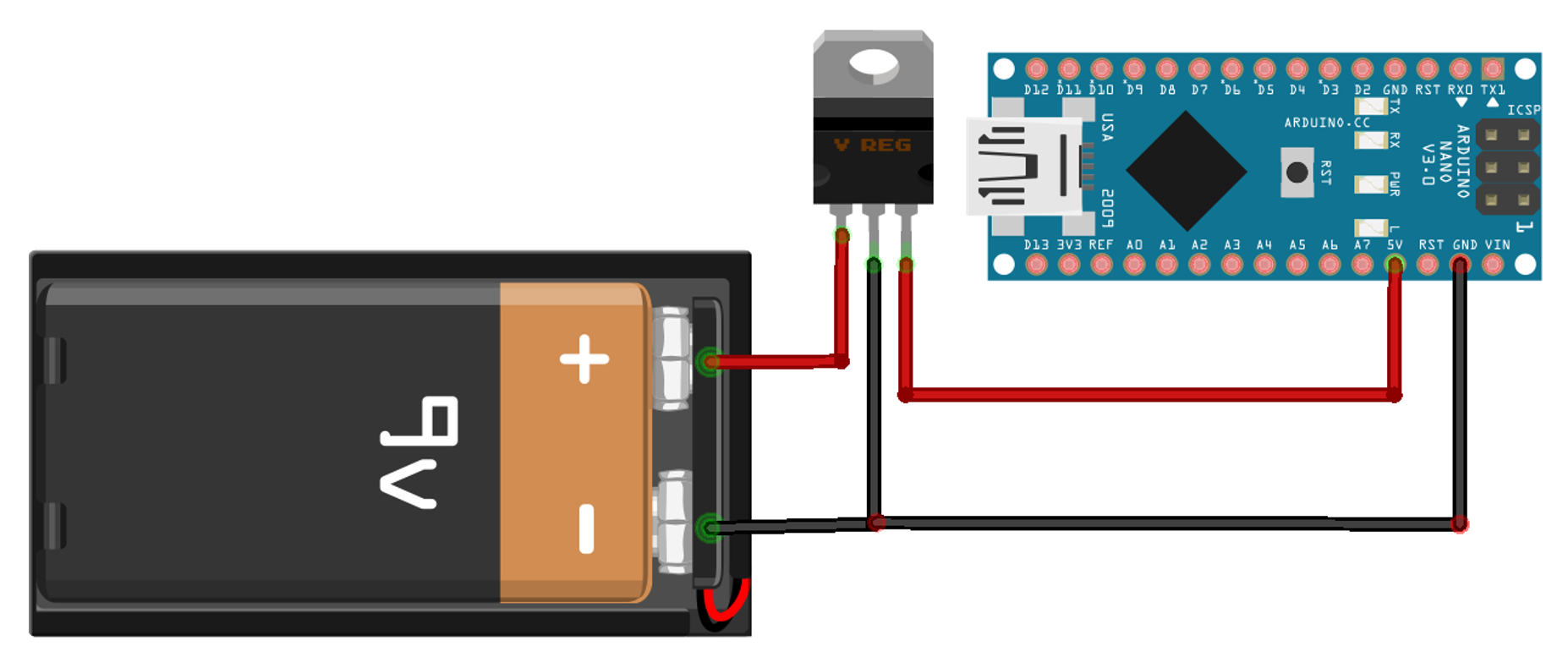Arduino Nano is a small and powerful microcontroller board that can be used for a variety of projects. Arduino Nano has various ways to power it as it has an onboard voltage regulator that increases its compatibility and working. This writeup will cover a number of ways to power an Arduino Nano with a 9V battery.
Can I Use 9V Battery with Arduino Nano
Yes, Arduino Nano can be powered up using the 9V battery. However, the 9V battery will need to be connected to the board through a voltage regulator or level shifter to convert the voltage to the appropriate level for the Arduino (typically 5V or 3.3V). It is also important to ensure that the voltage and current from the battery can safely and reliably power the board and any connected devices.
Before we can continue to use all the ways using which a 9V battery can be connected to Arduino Nano we must know the power requirements of Arduino Nano board.
Arduino Nano Voltage Requirements
A 5V supply is required to run Arduino Nano. Input voltage is converted to regulated 5V by the on-board voltage regulator (LM1117). The LDO regulator regulates the power supplied by the VIN pin. This regulator’s power requirements must be considered when connecting Arduino Nano to a battery.
The voltage specifications for LM1117 are as follows:
| LDO Regulator | Output (V) | Maximum Input (V) | Maximum Output (A) |
| LM1117 | 5V | 20V | 800mA |
The following image depicts the power tree of the Arduino Nano:
Different Ways to Connect 9V Battery with Arduino Nano
Using a 9V battery, you can power Arduino Nano in following given ways:
- 9V Battery with Voltage Regulator
- 9V Battery Directly Connected to VIN Pin Using a Battery Connector
- 9V External Portable Power Bank
- 9V Battery with DC-DC Converter
1: Voltage Regulator:
One of the most common ways to power an Arduino Nano with a 9V battery is to use a voltage regulator. Voltage regulator input volts are greater than output due to conversion. In this case, the voltage regulator would convert the 9V to 5V, which is the required working voltage of the Nano board. The LM7805 is a common voltage regulator used for this purpose.
2: Battery Connector:
A simple way to power an Arduino Nano with a 9V battery is to use a battery connector. This is a small device that connects the battery to the Arduino Nano and provides a stable voltage for the board. However, this method is only recommended for short-term projects as the battery may not last if other methods.
3: USB 9V Portable Power Supply:
Another way to power an Arduino Nano with a 9V battery is to use a USB portable power supply. This is a device that takes in voltage ranging from 7V-20V and converts it to a 5V power supply. This can be a convenient way to power an Arduino Nano as it allows you to use a USB cable to power the board.
4: DC-DC Converter:
Another way to power an Arduino Nano with a 9V battery is to use a DC-DC converter. A DC-DC converter either steps up or steps down the DC voltage depending upon the application and type of converter. This can be a more efficient way to power an Arduino Nano as it can convert a higher voltage to a lower voltage without wasting energy as heat. Number of DC-DC converters are available, such as the LM2675 or LM2575.
Conclusion
In conclusion, different methods can be used to power an Arduino Nano with a 9V battery. Every method features its own advantages and disadvantages, so it’s important to select the one that best suits your project’s needs. Whether you use a voltage regulator, DC-DC converter, battery connector, or USB power supply, make sure to always use a suitable power supply to avoid any damage to your Arduino Nano.






